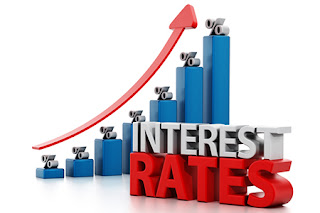Unveiling the Dynamics: Factors Affecting Fluctuations in Mortgage Rates
Understanding the intricate interplay of factors influencing fluctuations in mortgage rates can empower you to make informed decisions when navigating the real estate landscape. From the impact of lower interest rates to the implications of current high mortgage rates, delving into these dynamics sheds light on the ever-evolving realm of mortgage rates.
Remember, these factors are quite important
to understand. Bear these in mind when considering interest rate factors.
Economic Indicators
One of the most significant factors
affecting mortgage rates is the macroeconomic environment. Economic indicators
such as inflation rates, GDP growth, and employment data influence the
direction in which mortgage rates move. For instance, if the economy
experiences robust growth and low unemployment, this might lead to higher
mortgage rates as demand for borrowing increases.
Federal Reserve Policies
The policies set by the Federal Reserve
wield substantial influence over mortgage rates. The Federal Reserve's
decisions on monetary policy, including changes to the federal funds rate,
directly impact the cost of borrowing. For instance, if the Federal Reserve
decides to implement lower interest rates in response to economic conditions,
this could result in a subsequent decline in mortgage rates.
Housing Market Conditions
The state of the housing market itself
contributes to the ebb and flow of mortgage rates. Factors such as housing
inventory, home sales trends, and regional market conditions can impact
mortgage rates. For example, in areas with high demand and limited supply,
mortgage rates might be influenced by this imbalance, resulting in higher
mortgage rates due to heightened competition.
Credit Market Conditions
The overall conditions of the credit market
also play a role in shaping mortgage rates. Lenders assess the risk
associated with mortgage loans based on prevailing credit market conditions. In
turn, this assessment can influence the rates offered to borrowers. Changes in
credit market conditions can lead to fluctuations, impacting both FNB Omaha
mortgage rates and interest rate mortgages in regions such as California and
Washington.
Government Policies and Regulations
Government policies and regulations in the
realm of housing finance and lending can impact mortgage rates. For instance,
initiatives aimed at enhancing homeownership, such as tax incentives and
subsidies, can influence the demand for mortgage loans. Additionally,
regulations that alter the risk profile of lending practices can impact the
availability and cost of mortgage credit, subsequently influencing mortgage
rates.
Global Economic Events
In our interconnected world, global
economic events can also echo through the realm of mortgage rates. Developments
in international markets, trade relations, and geopolitical events can impact
investor sentiment and drive changes in long-term bond yields, which are
closely linked to mortgage rates. As a result, global economic events can have
ripple effects on mortgage rates in the United States.
Conclusion
In the ever-evolving landscape of mortgage
rates, an array of dynamic factors continuously shape the trajectory of
borrowing costs and homeownership opportunities. From the impact of lower
interest rates to the implications of current high mortgage rates,
understanding the multifaceted determinants of mortgage rates is essential for
making informed decisions in the dynamic real estate market.
As you navigate the realm of mortgage rates
and consider the implications for FNB Omaha mortgage rates, interest rate
mortgages in California, and the average mortgage rate in Washington, a
holistic understanding of these underlying factors can equip you to adapt to
changing market conditions and leverage opportunities presented by fluctuating
mortgage rates for homeownership and real estate investment endeavors in the
United States.
Hope the above would have given you a basic
understanding of critical factors affecting interest and mortgage rates.


Comments
Post a Comment